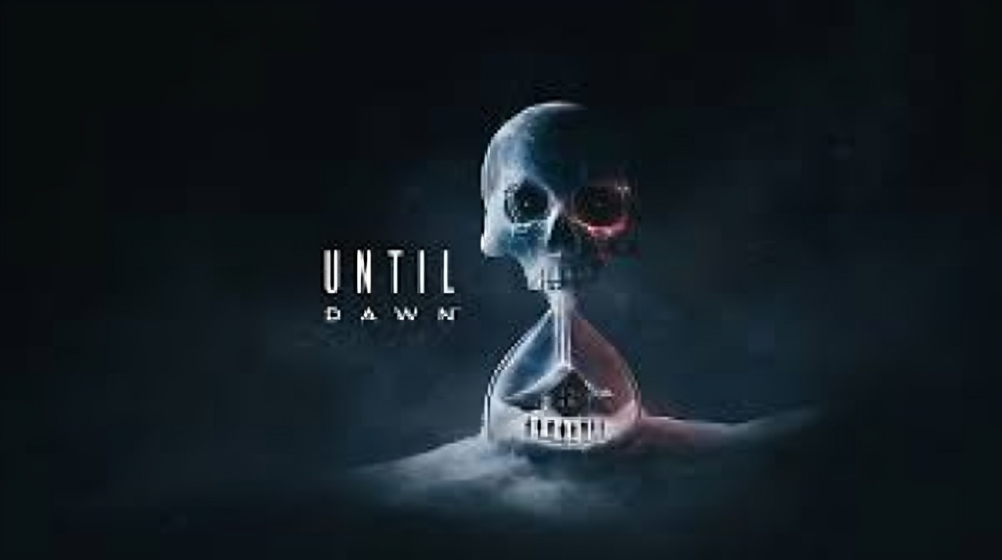Until Dawn Movie Review A Time-Loop Horror Odyssey

Picture yourself in a darkened theater, heart pounding as a group of friends flees a masked killer through a storm-drenched valley, only to wake up and face a new horror moments after their gruesome deaths. This is the chilling premise of Until Dawn, the 2025 horror thriller that brings the beloved 2015 video game to the big screen. Directed by David F. Sandberg, known for Lights Out and Annabelle: Creation, the film dives into a time-loop nightmare that’s both thrilling and divisive. With a star-studded cast, practical effects, and a bold adaptation of the game’s survival horror roots, Until Dawn has sparked heated debates among fans and critics. Is it a groundbreaking horror flick or a missed opportunity to capture the game’s magic? Let’s explore the plot, reception, behind-the-scenes craft, and the buzz surrounding this cinematic gamble.
The Plot: A Race Against Time
Until Dawn centers on Clover (Ella Rubin) and her friends, who journey to a remote valley to uncover the truth behind Clover’s sister Melanie’s mysterious disappearance a year earlier. Their quest takes a terrifying turn when they’re trapped in an abandoned visitor center, hunted by a masked killer. Each death resets the night, but with a twist: the threats change, from a deformed clown to wendigo-like creatures, each more horrifying than the last. With only a limited number of “do-overs,” the group must outsmart their foes to survive until dawn.
This time-loop mechanic echoes the game’s choice-driven narrative, where players’ decisions shaped character fates. However, the film opts for a linear story, focusing on the group’s collective struggle rather than individual choices. The result is a fast-paced horror experience that blends slasher tropes with supernatural elements, delivering gore and tension in equal measure. While the premise is innovative, some critics argue it struggles to maintain momentum across its repetitive cycles.
Behind the Scenes: Practical Horror and Creative Choices
Sandberg’s horror expertise shines through in Until Dawn’s technical execution. A behind-the-scenes glimpse shared on Instagram reveals the film’s reliance on practical effects, crafted by Applied Arts FX Studio, known for Hereditary and Thanksgiving (Bloody Disgusting). Scenes like a worm burrowing into a character’s face showcase the studio’s gruesome artistry, adding a visceral edge to the film’s kills. Sandberg’s storyboards, paired with on-set footage, highlight his meticulous approach to blending practical and visual effects for maximum impact.
The adaptation process was a balancing act. Writer Gary Dauberman views the film as “Part 2” of the Until Dawn franchise, with the game as “Part 1,” set in the same universe (Until Dawn Wiki). Yet, Sandberg has kept the timeline ambiguous, suggesting it could be a prequel or sequel, leaving room for future projects (Wikipedia). This open-ended approach, combined with Easter eggs tying to the game, aims to satisfy fans while carving a new path. However, the decision to stray from the game’s interactive storytelling has sparked debate, with some arguing it undermines the source material’s core appeal.
Critical Reception: A Mixed Bag
The film’s reception is a tale of highs and lows. On Rotten Tomatoes, it holds a 54% critics’ score based on 99 reviews, with an average rating of 5.5/10. The consensus praises the “novel premise” of delivering multiple horror movies in one but notes that “a lack of inspiration in each new variation yields a spoil of diminishing returns.” Metacritic assigns a score of 47/100 from 23 critics, indicating “mixed or average” reviews (Wikipedia). Audience scores reflect similar division, with CinemaScore giving a “C+” and PostTrak reporting a 63% positive score, with 42% recommending it.
Critics like Louis Peitzman of Vulture commend the film’s creativity and meta-commentary on the slasher genre but warn that its “pile-on” of ideas threatens to collapse under its own weight (Wikipedia). Roger Ebert’s review calls it a “frustrating” film with untapped potential, citing lackluster execution (Roger Ebert). IGN’s analysis is particularly sharp, arguing that the movie’s greatest weakness is straying too far from the game’s choice-driven storytelling, likening it to a “beginner’s attempt at Cabin in the Woods” (IGN).
Fan Buzz: Love, Critique, and Debate
The buzz on X reveals a polarized fanbase. Some, like @andysmithart, frame the film as a “Horror Groundhog Day,” appreciating its time-loop innovation. Others, such as @SciFiNow, acknowledge its “bold style and genre-bending ambition” but lament the loss of the game’s emotional weight . A YouTube review by @OverRazeGamerYT dives deep into the film’s strengths and flaws, reflecting fans’ desire to unpack its complexities.
Fans of the game often express disappointment over the film’s departure from the interactive narrative that made Until Dawn a cult classic. The game’s butterfly-effect mechanics, where every choice mattered, are replaced by a more conventional horror plot, leading some to feel it misses the mark. However, newcomers to the franchise find the film’s fast pacing and gory kills entertaining, as seen in an IMDb user review: “I enjoyed it, but I haven’t played the game yet! The concept was really fun”.
Game vs. Movie: A Tale of Two Mediums
The 2015 Until Dawn game, developed by Supermassive Games, is a masterclass in interactive horror, blending slasher film tropes with choice-driven storytelling. Players controlled the fates of eight teenagers, with decisions leading to multiple endings. The movie, by contrast, opts for a linear narrative, focusing on a new group of characters and a time-loop structure. While this allows for creative freedom, it sacrifices the game’s replayability and emotional depth, as noted by IGN.
The film’s cast, including Ella Rubin, Michael Cimino, Odessa A’zion, and Ji-young Yoo, delivers strong performances, with Rubin standing out as Clover. Their chemistry adds stakes to the survival narrative, but the lack of player agency means the characters’ fates feel less personal than in the game. The inclusion of Peter Stormare, reprising his role as Dr. Hill, serves as a nod to fans, though its ambiguous timeline leaves questions unanswered.
Cultural Impact and Future Prospects
Until Dawn joins a wave of video game adaptations, from The Last of Us to Uncharted, but its mixed reception highlights the challenges of translating interactive media to film. Critics like Erik Kain of Forbes argue that adapting a game designed to mimic a horror movie back into a film feels redundant. Yet, the film’s technical achievements and Sandberg’s vision suggest potential for growth in the genre.
The ambiguous timeline—neither confirmed as a prequel nor sequel—opens doors for future projects. Dauberman’s vision of a “Part 3” in the Until Dawn universe hints at a franchise that could bridge game and film narratives. For now, the film serves as a bold, if imperfect, experiment in adapting interactive horror.
Practical Takeaways
- For Game Fans: Approach the film with an open mind, but don’t expect the same choice-driven depth. Enjoy the nods to the game, like Dr. Hill’s cameo, and the practical effects.
- For Horror Enthusiasts: If you’re new to Until Dawn, the film’s time-loop premise and gory kills make it a fun, if flawed, horror ride. Watch it in theaters or on Fandango at Home.
- Engage with the Community: Share your thoughts on X or check out fan discussions on platforms like Reddit to see how others view the adaptation.
- Explore the Game: If the movie piques your interest, play the 2015 Until Dawn game on PlayStation for a deeper, interactive experience.
Comparison Table
Aspect | Until Dawn Game (2015) | Until Dawn Movie (2025) |
|---|---|---|
Medium | Interactive video game | Linear horror film |
Story | Choice-driven, multiple endings | Time-loop, single narrative |
Setting | Blackwood Mountain ski lodge | Remote valley visitor center |
Cast | Rami Malek, Hayden Panettiere, Peter Stormare | Ella Rubin, Michael Cimino, Peter Stormare |
Reception | 8.7/10 on IMDb, critically acclaimed | 54% on Rotten Tomatoes, mixed reviews |
Key Feature | Butterfly-effect mechanics | Limited time-loop “do-overs” |
Conclusion
Until Dawn (2025) is a bold attempt to bring a beloved horror game to the big screen, blending a time-loop premise with practical effects and a talented cast. While it delivers thrills and visual flair, its deviation from the game’s interactive storytelling has left fans and critics divided. For horror enthusiasts, it’s a worthwhile watch for its creative kills and Sandberg’s direction, but game fans may miss the emotional weight of their choices. As a milestone in video game adaptations, Until Dawn sparks important conversations about balancing fidelity and innovation. Whether you’re drawn to its gore or curious about its legacy, this film is a chilling ride worth experiencing. Catch it in theaters, stream it, and join the debate—did Until Dawn survive the night, or is it stuck in a loop of missed potential?



